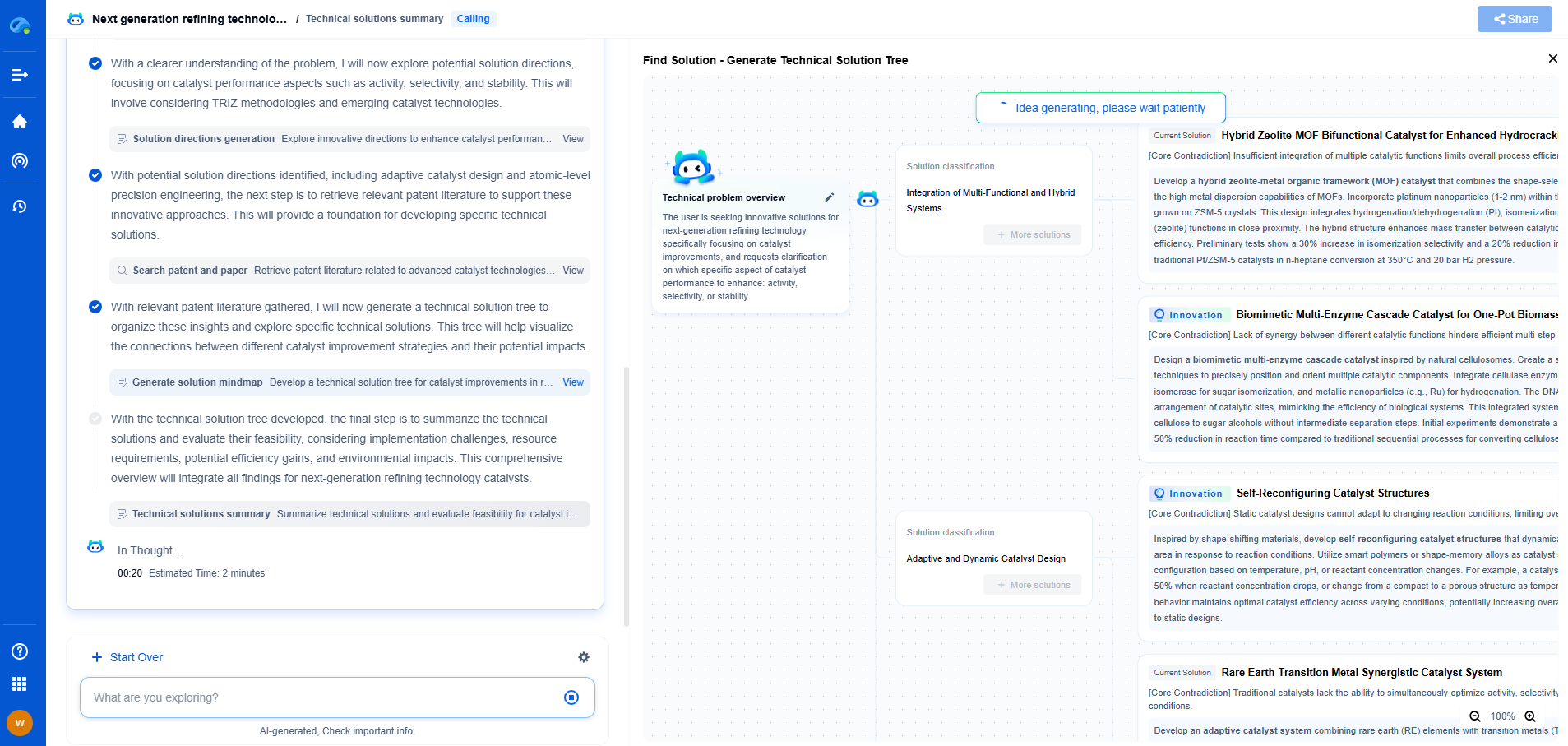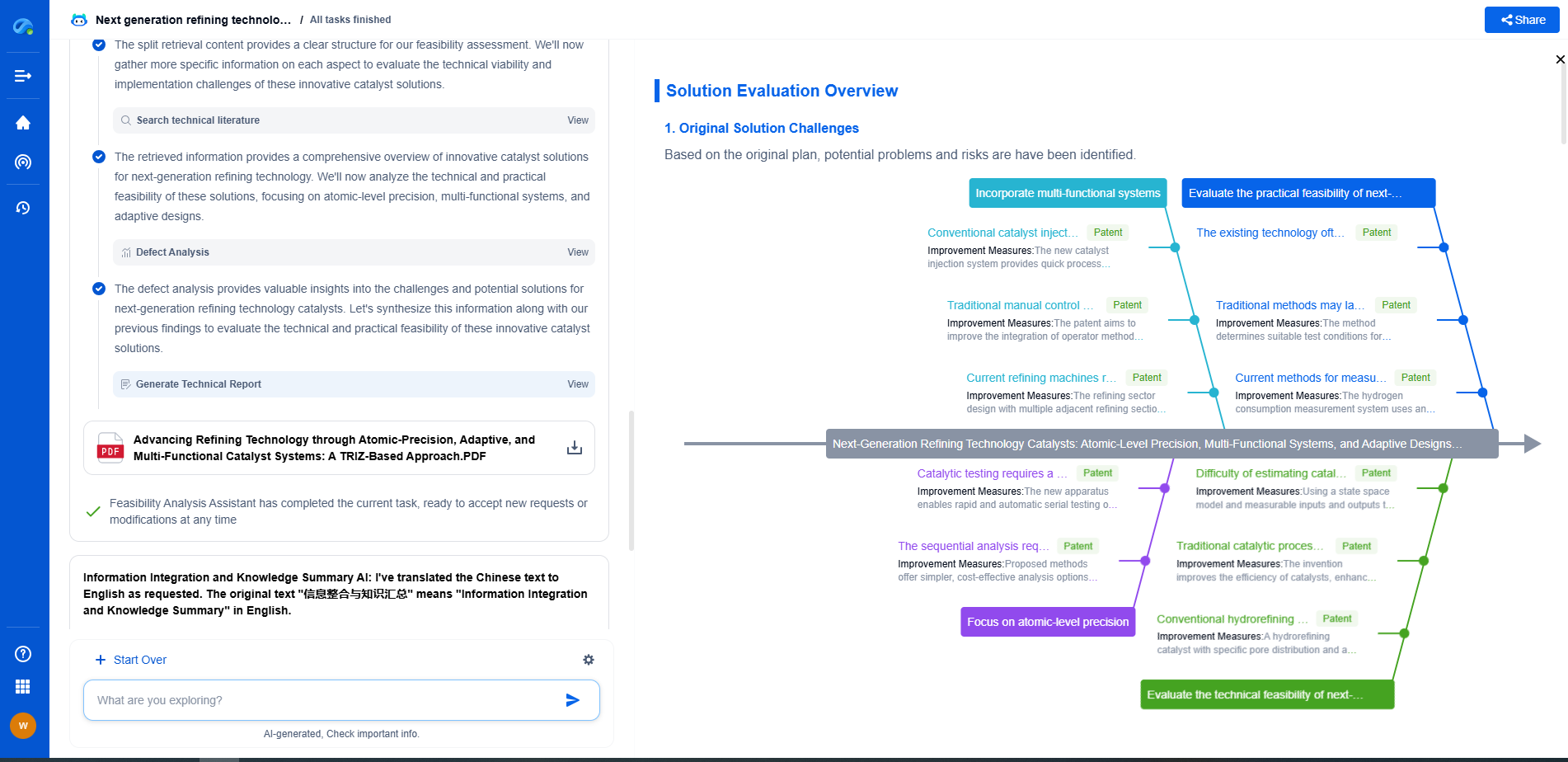BSS with Independent Component Analysis (ICA) in Acoustic Scene Separation
JUL 16, 2025 |
Blind Source Separation (BSS) is a critical technique in signal processing, particularly for tasks that involve separating a mixture of signals without prior knowledge about the source or the mixing process. The objective of BSS is to extract or separate original source signals from the observed mixed signals. This technique finds applications in various domains, from telecommunications and medical imaging to acoustic scene analysis.
In the context of acoustic scene separation, BSS plays a pivotal role in isolating individual sound sources, such as separating musical instruments from a recording or extracting human speech from a noisy environment. The effectiveness of BSS in these scenarios relies heavily on the ability to accurately identify and segregate the components within a complex acoustic mixture.
Introduction to Independent Component Analysis (ICA)
Independent Component Analysis (ICA) is a popular statistical method used in BSS for the purpose of decomposing a multivariate signal into additive, independent components. The core principle of ICA is to transform a set of mixed signals into statistically independent components. This transformation is based on the assumption that the source signals are non-Gaussian and mutually independent.
ICA has become a go-to technique in acoustic scene separation because of its ability to handle real-world audio data, which often comprises non-stationary and non-Gaussian signals. By leveraging ICA, researchers and practitioners can effectively isolate individual audio sources from complex acoustic environments, improving both the clarity and quality of the separated signals.
The Process of Applying ICA in Acoustic Scene Separation
The process of applying ICA in acoustic scene separation involves several key steps:
1. Data Preprocessing: Before applying ICA, the audio data must be preprocessed to enhance the quality of the separation. This involves removing noise, normalizing signal levels, and formatting the data for analysis.
2. Model Selection: ICA requires selecting an appropriate model that defines the statistical properties of the source signals. This model is critical, as it influences the accuracy and effectiveness of the separation process.
3. Algorithm Implementation: Implementing ICA typically involves iterative algorithms that minimize mutual information or maximize non-Gaussianity between the separated components. Popular algorithms include FastICA, JADE, and Infomax.
4. Post-processing: After the ICA algorithm has been executed and the individual components have been separated, post-processing techniques such as filtering or signal enhancement may be applied to further refine the results and improve the clarity of the separated audio signals.
Challenges and Considerations
Despite the effectiveness of ICA in acoustic scene separation, there are several challenges and considerations to keep in mind:
- Assumptions of Independence: ICA assumes that the source signals are statistically independent, which may not always hold true in real-world scenarios. This assumption can limit the applicability of ICA in certain contexts.
- Computational Complexity: The process of separating signals using ICA can be computationally intensive, especially with large datasets or real-time applications. Optimizing the algorithm for efficiency is often necessary.
- Sensitivity to Noise: Like many signal processing techniques, ICA is sensitive to noise. Ensuring clean input data and implementing noise reduction techniques are essential to achieving high-quality results.
Applications and Future Directions
The application of ICA in acoustic scene separation has opened up numerous possibilities across various industries. In the field of audio engineering, it allows for the isolation of musical tracks, enhancing the capabilities of audio editing software. In telecommunications, ICA enhances speech recognition systems by effectively separating speech from background noise.
Looking ahead, advancements in machine learning and artificial intelligence are expected to further enhance the capabilities of ICA in BSS. By integrating ICA with deep learning techniques, researchers aim to overcome existing limitations, such as dependency on source signal assumptions and computational constraints.
In conclusion, ICA remains a powerful tool in the realm of acoustic scene separation, offering a robust framework for isolating and enhancing audio signals in complex environments. As technology continues to evolve, the potential applications of ICA in BSS are vast and varied, promising significant improvements in audio processing and analysis.
In the world of vibration damping, structural health monitoring, and acoustic noise suppression, staying ahead requires more than intuition—it demands constant awareness of material innovations, sensor architectures, and IP trends across mechanical, automotive, aerospace, and building acoustics.
Patsnap Eureka, our intelligent AI assistant built for R&D professionals in high-tech sectors, empowers you with real-time expert-level analysis, technology roadmap exploration, and strategic mapping of core patents—all within a seamless, user-friendly interface.
⚙️ Bring Eureka into your vibration intelligence workflow—and reduce guesswork in your R&D pipeline. Start your free experience today.
- R&D
- Intellectual Property
- Life Sciences
- Materials
- Tech Scout
- Unparalleled Data Quality
- Higher Quality Content
- 60% Fewer Hallucinations
Browse by: Latest US Patents, China's latest patents, Technical Efficacy Thesaurus, Application Domain, Technology Topic, Popular Technical Reports.
© 2025 PatSnap. All rights reserved.Legal|Privacy policy|Modern Slavery Act Transparency Statement|Sitemap|About US| Contact US: help@patsnap.com

